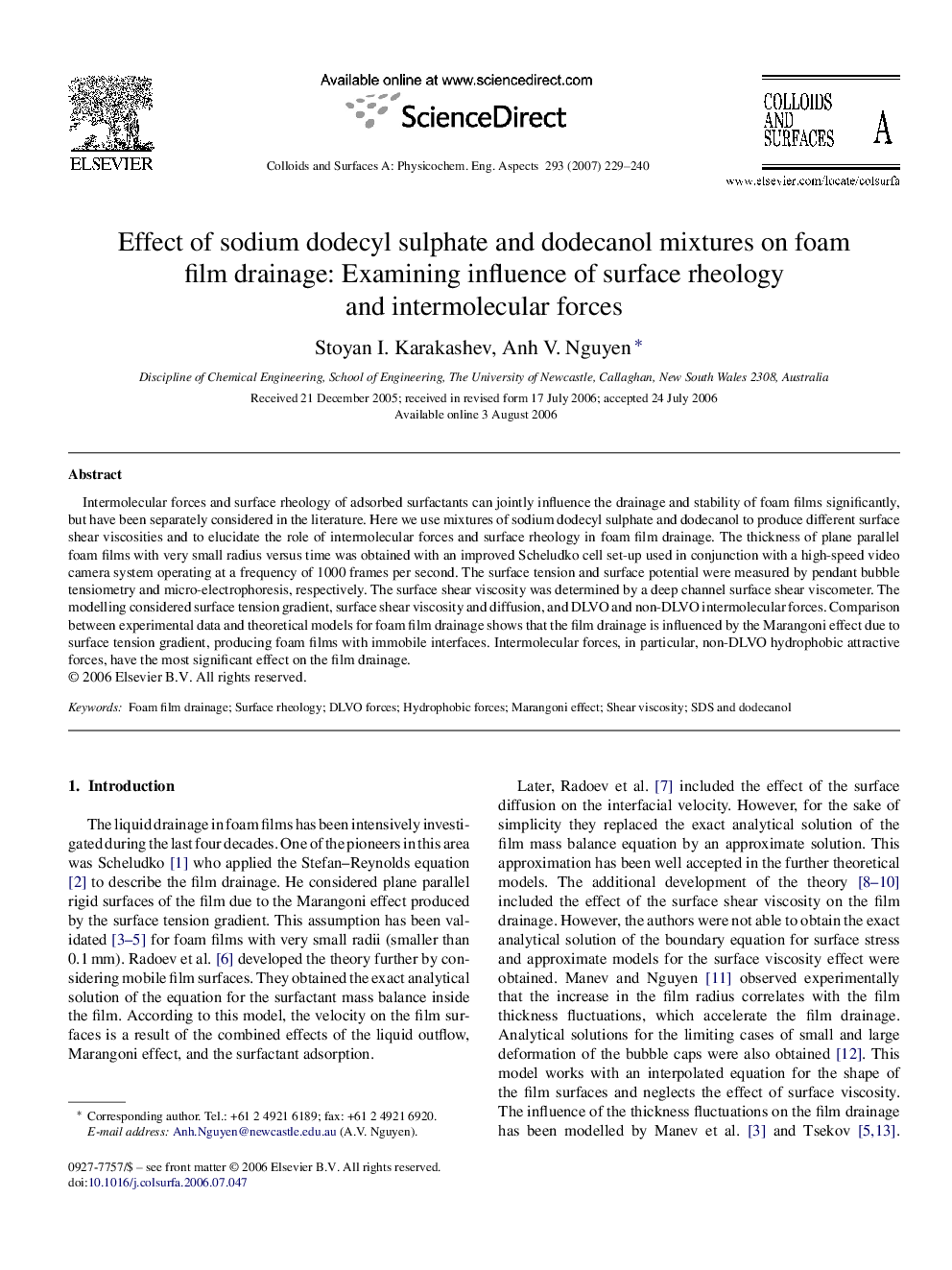| Article ID | Journal | Published Year | Pages | File Type |
|---|---|---|---|---|
| 597766 | Colloids and Surfaces A: Physicochemical and Engineering Aspects | 2007 | 12 Pages |
Intermolecular forces and surface rheology of adsorbed surfactants can jointly influence the drainage and stability of foam films significantly, but have been separately considered in the literature. Here we use mixtures of sodium dodecyl sulphate and dodecanol to produce different surface shear viscosities and to elucidate the role of intermolecular forces and surface rheology in foam film drainage. The thickness of plane parallel foam films with very small radius versus time was obtained with an improved Scheludko cell set-up used in conjunction with a high-speed video camera system operating at a frequency of 1000 frames per second. The surface tension and surface potential were measured by pendant bubble tensiometry and micro-electrophoresis, respectively. The surface shear viscosity was determined by a deep channel surface shear viscometer. The modelling considered surface tension gradient, surface shear viscosity and diffusion, and DLVO and non-DLVO intermolecular forces. Comparison between experimental data and theoretical models for foam film drainage shows that the film drainage is influenced by the Marangoni effect due to surface tension gradient, producing foam films with immobile interfaces. Intermolecular forces, in particular, non-DLVO hydrophobic attractive forces, have the most significant effect on the film drainage.
